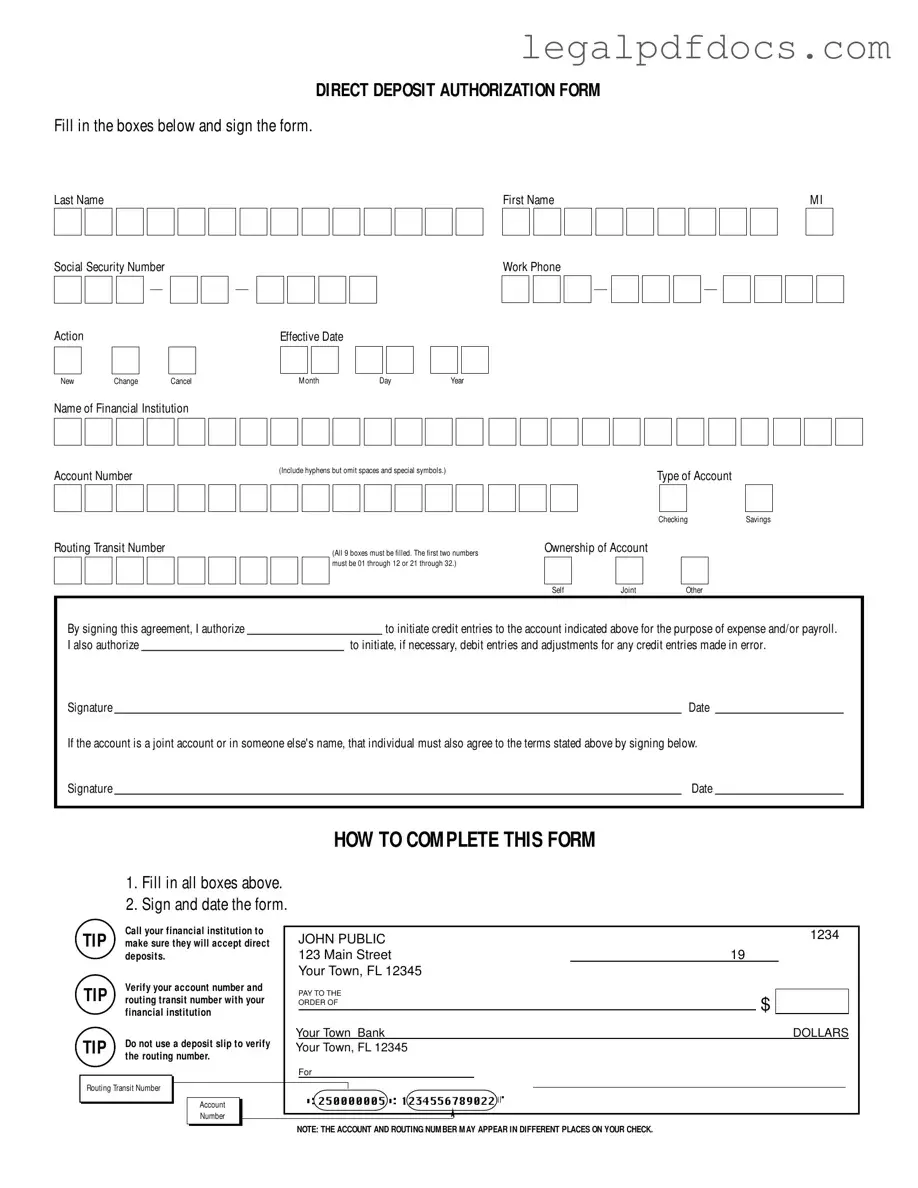The Generic Direct Deposit form is a crucial document for anyone looking to streamline their payroll or expense payments. This form allows individuals to authorize their employer or other payers to deposit funds directly into their bank accounts, eliminating the need for paper checks. It requires essential information such as the individual's name, Social Security number, and contact details. Additionally, the form includes sections for the financial institution's name, account number, and routing transit number, which are vital for ensuring accurate and timely deposits. Users must specify whether the account is a checking or savings account and indicate the nature of the action—new, change, or cancellation. The form also necessitates signatures from both the account holder and, if applicable, any joint account holders, thereby ensuring that all parties agree to the terms. Completing the form accurately is imperative; it includes clear instructions to fill in all required fields and verify account details with the financial institution to avoid errors. With the right information, this form can facilitate a seamless transition to direct deposit, providing convenience and security for all parties involved.
